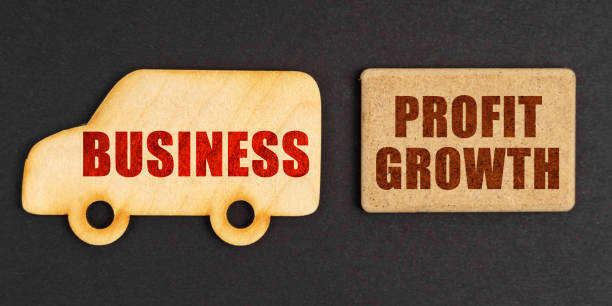
Most people think of business as offering value in the marketplace and, in exchange, getting paid a specific amount of money. That’s okay if that specific amount of money translates into a healthy profit.
Now what do I mean by a healthy profit? I believe a healthy profit is one in which your net profit (not gross profit) leaves enough money in the business to invest in other areas of the business you’re looking to optimize. It could be in the form of hiring new talent, opening a new location, getting bigger office space, investing in learning and development, investing in new technology, and much more.
One of my favorite quotes is that “if your business is not growing, it’s probably dying,” and whether you realize it or not is a whole other ballgame. It’s important to understand that the world does not come to a halt simply because you’re feeling a little bit comfortable. Hence, as a leader in your business, it’s imperative that you instill a culture of continuous growth in your company. Which means you’re continuously optimizing several aspects of your business.
In fleet management, it’s basically the same thing. What areas of my fleet system need optimization? That’s the question I’m hoping you’re asking as a Fleet Manager. If you understand that there is never a destination you’re attempting to reach and that you will always be optimizing for something, then you’re in a pretty good spot. If you have an arrival mentality in your fleet management system, then you’re going to be in big trouble quite quickly.
Unfortunately, many fleet managers have espoused an arrival mentality. They fix one or two sections of their fleet system, and they’re good to go for the next 3, 4, or 5 years. The sad part about this is that they’ll be losing money on a daily basis and not even know it. This goes back to my definition of a healthy profit.
When you’re losing money on expenses you believe are routine and part of the costs of owning a fleet, that’s a serious threat to your company’s ability to turn a healthy profit. What makes this even worse is that you believe this is normal. A business leader with a continuous growth mindset questions everything, even her own beliefs.
There are various ways to develop this continuous growth mindset, and, in our company, we have a three-step process that I’ll share with you here:
- We learn to be uncomfortable.
- We are comfortable with being uncomfortable.
- We always allow ourselves to be challenged (we question everything!).
The sad part is that most people fail because they stay in the fixed mindset, and here is how the fixed mindset operates:
- This is who I am.
- This is what I know.
- This is what I’m capable of (or what I’m good at).
- This is where I am going to stay.
The growth mindset, on the other hand, operates like this:
- This is where I am now.
- This is what I am good at now.
- I recognize that there is a process that, if I go through it, will help me get better.
- I understand that there will never be a finish line.
The growth-mindset type of Fleet Manager knows his next five to ten moves. He knows he must have plans for the future, and if he struggles in any way, he knows how to ask for help.
In today’s ever-changing market, standing still is a recipe for failure. To stay ahead of the competition and meet the evolving needs of your customers, you must continually seek out new opportunities for improvement.
The growth mindset Fleet Manager optimizes the following:
- Advanced analytics and machine learning in fleet management technology
- Regularly soliciting feedback from customers (customer needs, pain points, and desires)
- Staying up-to-date with industry trends and practices (through conferences, webinars, newsletters, and other industry events)
- Regularly analyze and evaluate data to identify areas for improvement.
Why settle for mediocrity when you can achieve excellence through continuous improvement?
Finally, continuous improvement is essential for success in the ever-evolving field of fleet management. By staying up-to-date with the latest technology and industry trends, regularly analyzing data, and gathering feedback from customers and other stakeholders, a Fleet Manager can identify areas for improvement and take action to address issues.
This not only helps to stay ahead of the competition but also ensures that customers receive the best possible service and value. Ultimately, the key to continuous improvement is having a growth mindset and a commitment to always striving to be better.
Ready to take your fleet management processes to the next level?
Use our services to simplify your processes and save time and money.
Join The Revolution!
-
Previous Post
The Decision-Making Mindset in Fleet Management






